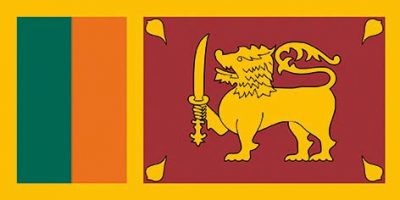 Colombo lies at the junction of several important trade routes, and is one of the most significant ports in Asia with a big transhipment trade in containers from Europe to the Far East. At least 70% of the container transhipment volumes to India are handled by the four big container terminals in the Port of Colombo, which had a throughput of 4.5 MTEU of containers in 2015 and is in the top thirty biggest container ports in the world. The Sri Lankan Ports Authority (SLPA) has responsibility for the Port of Colombo from its new headquarters in the new South Harbour adjacent to the original Port of Colombo. The SLPA also has responsibility for the development and maintenance of several other ports in Sri Lanka, including Hambantota with big vehicle imports of over 190,000 vehicles and trucks per year and a big bunkering trade. The other SLPA maintained ports are Trincomalee, Galle, Oluvil, Point Pedro and Kankasanthurai.
Colombo lies at the junction of several important trade routes, and is one of the most significant ports in Asia with a big transhipment trade in containers from Europe to the Far East. At least 70% of the container transhipment volumes to India are handled by the four big container terminals in the Port of Colombo, which had a throughput of 4.5 MTEU of containers in 2015 and is in the top thirty biggest container ports in the world. The Sri Lankan Ports Authority (SLPA) has responsibility for the Port of Colombo from its new headquarters in the new South Harbour adjacent to the original Port of Colombo. The SLPA also has responsibility for the development and maintenance of several other ports in Sri Lanka, including Hambantota with big vehicle imports of over 190,000 vehicles and trucks per year and a big bunkering trade. The other SLPA maintained ports are Trincomalee, Galle, Oluvil, Point Pedro and Kankasanthurai.
The island of Sri Lanka was known as Ceylon until 1972, but had gained its independence from the British in February 1948 with its capital at Colombo. However, the nearby ancient capital of Kotte became the administrative capital of the island in 1982, while Colombo remained as the commercial capital. A passenger service from Colombo to Northern Sri Lanka and the Indian State of Tamil Nadu recommenced in June 2011 after a bloody civil war lasting thirty years had ended against the Tamil Tigers in Northern Sri Lanka. The forward looking Government of Sri Lanka during the last decade has recognised the importance of developing the infrastructure of the Port of Colombo e.g. the plans to convert the Bandaranaike Quay into a fully fledged cruise terminal are well advanced. The Bandaranaike family have been Prime Ministers of the country in the period from 1956 when Solomon Bandaranaike took office, and after his murder, his widow Sirimavo became the first woman Prime Minister in the world. The SLPA was formed in 1979 and celebrated its 35th Anniversary in 2014, and owns a big fleet of twenty dredgers and tugs to maintain and control the depths of the entrance channels and escort vessels to the berths of its seven managed ports.
History Of Colombo
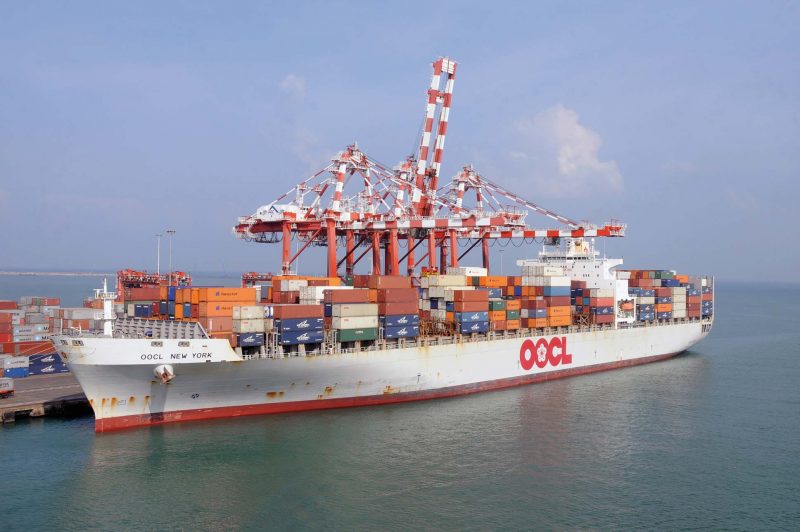
Colombo was known to many nationalities of traders from antiquity e.g. Arabs, Greeks, Romans, and Persians, but the first inhabitants of the island around 3,000 BC were the Veddas. They were conquered in the sixth century BC by the Sinhalese, who originated in North India. The characteristics of the Vedda people remain in some of the inhabitants of the remote interior of the island. Budda (563-483 BC) visited Sri Lanka several times, and found enlightenment in the Sinhalese capital of that period, Anuradhapura. The Buddhist Sinhalese form 72% of the population, and more Tamil people were brought into the island by the British from India to work on the tea estates in the cooler centre of the island around Kandy. The central highlands produce tea, while rubber, coconuts, rice and cassava are the other main crops. The Mahaweli Ganga river irrigation scheme of 1976 has watered one million acres of land in order to grow rice and thus offset large imports of rice. The island is not self sufficient in food, with one third of requirements imported. The northern tip of the island is only thirty miles from mainland India, with the Adam’s Bridge chain of islands almost making a land connection between mainland India and Sri Lanka. Tamils from South India invaded the island in the 11th century and drove the Sinhalese southwards, particularly to the Kandy area, which remained their stronghold until the British took it in 1815.
Thanks to its large sheltered harbour, Colombo became a strategic port on the route from Europe to the Far East. Colombo derives its name from ‘Kolomtota’ or the harbour of Colombo, which dates back to the 14th century kingdom of Kotte. ‘Kolomtota’ was the first port used by merchants from China, India and Persia, who came via the Silk Road to trade goods for the fabulous spices of the island. The Portuguese took control of the harbour in 1505, followed by the Dutch in 1656, and finally by the British in 1796. The British extended, upgraded and converted the roadstead into a sheltered harbour with piers during the latter part of their rule.
The British were responsible for much of the planning of the present city, and tram tracks and granite pavements laid during this era can still be seen today all over the city. In 1844, the P. & O. were awarded a British Government contract for a proposed new Ceylon (Galle) to Penang, Singapore and Hong Kong service. Singapore was then reached in eight days from Galle (the Ceylon port became Colombo in 1882) and Hong Kong in a fortnight, with the new service extended to Shanghai in 1846. The population of the Western Province of Ceylon was only 80,000 on 16th January 1866, when the British Legislative Council of Ceylon held its first meeting. In 1872, the Eastern Telegraph Company was formed to rationalise the British cable companies submarine telegraph connections to Bombay and Colombo.
Construction Of Colombo Harbour
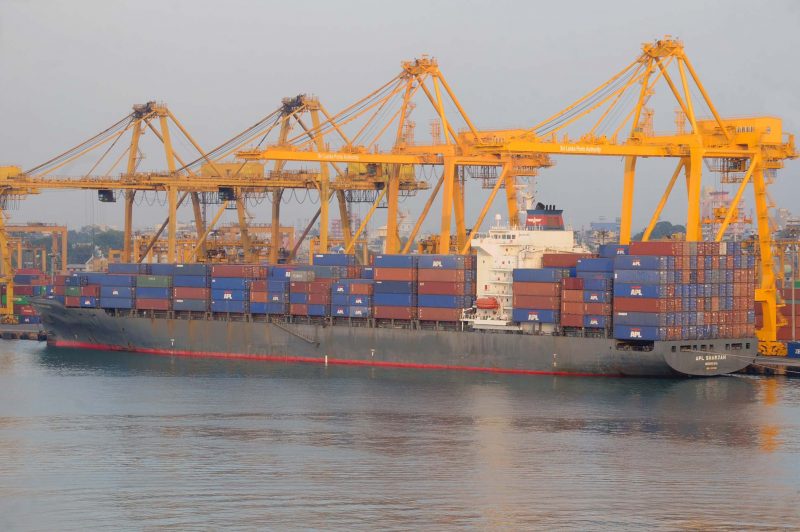
During 1873, the construction of the harbour breakwaters was begun, and the Fort area of the city with buildings of grand colonial style was created by flooding surrounding wetlands. Today, the Fort area has a World Trade Centre, and just to the south, Slave Island was once surrounded by water and was where the Dutch settlers held their incarcerated slaves for later sale to plantation owners to work tea, rubber, coconut and cassava crops. The construction of the new South/West breakwater to enclose 640 acres of harbour took twelve years and was completed in 1885 at a cost of £705,207. Stone was brought eleven miles from a quarry at Mahara by a newly laid railway. A lighthouse was built at the end of the breakwater, and construction was so advanced by June 1882 that the P. & O. steamers abandoned their base at Galle, seventy miles to the south, in favour of Colombo. During the six years from 1883 to 1889, shipping arriving at Colombo increased by 60%.
A harbour scheme to enclose a further 643 acres at the north end of the bay was put in hand in 1894, building a further North/East breakwater of length 1,100 feet, together with a detached breakwater of 2,670 feet. A slipway was constructed for craft up to 1,200 dwt with access by three railway tracks to transport the stone to the new breakwaters. In 1899, a barge repairing basin was completed and grain warehouses erected at Kochchikadde on the reclaimed areas. The first graving dry dock was completed in 1907 of length 700 feet, entrance width of 85 feet, and depth over the sill of thirty feet. The Guide Pier for this graving dock was completed in August 1909 extending 800 feet to seaward to enable vessels to be brought under control and safely manoeuvred into the dry dock.
No fewer than eighteen coaling jetties of timber construction and each of 190 feet in length were constructed between 1902 and 1906, the timber piles being replaced with reinforced concrete between 1926 and 1932. The Colombo Port Commission was constituted in 1913, and a Harbour Engineer appointed to oversee maintenance of the new harbour. Two warehouses were built in 1916 on reclaimed land at Pettah near the Fort area. In 1918, construction of the Kolonnawa Oil Depot with ten inch fuel lines for discharge or bunkering was begun, together with a new harbour rail connection through the Bloemendhal Swamp. The first tanker arrived at the Oil Depot on 17th February 1923, and the harbour rail connection opened on 1st September 1923. The latter greatly speeded up the loading and discharge rates of cargo ships as the old access through the Fort area was inconvenient and slow.
Cost Summary Of Colombo Harbour
| South/West Breakwater | 4.17M rupees |
| North/East Breakwater | 1.41M rupees |
| North/West Breakwater | 6.57M rupees |
| South/West Breakwater extension | 5.08M rupees |
| Patent Slip | 0.65M rupees |
| Graving Dock & Guide Pier | 6.51M rupees |
| Coaling Jetties | 1.40M rupees |
| Block Jetty | 0.63M rupees |
| Oil Jetties | 1.32M rupees |
| Cargo Jetties | 10.26M rupees |
| Floating Crane | 3.00M rupees |
| Extensive harbour/channel dredging | 25.42M rupees |
| Total Cost 1873-1930 | 66.42M rupees |
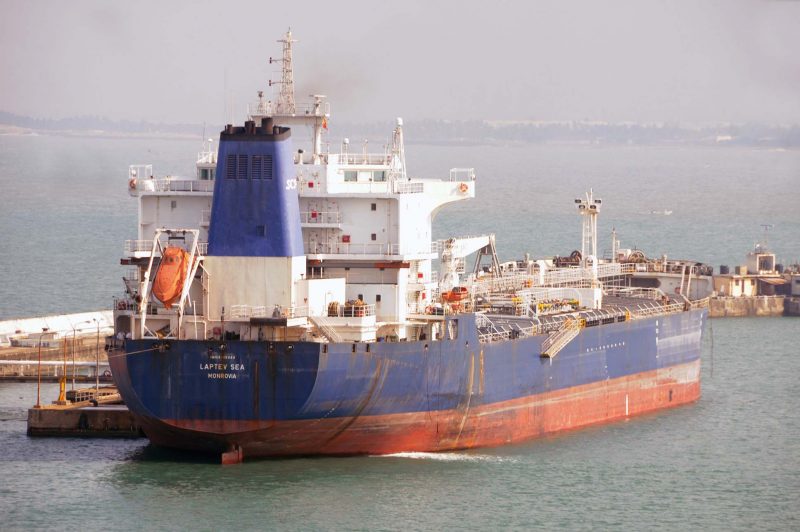
The extensive dredging costs included the provision of a new steam bucket dredger Merak and steam hopper Perseverance in 1880, steam bucket dredger Triton in 1892, steam bucket dredger Sir John Coode in 1894, and the ordering of a new steam bucket dredger Sir William Matthews of 1,375 grt in 1918. The latter order was placed with the Paisley yard of Fleming & Ferguson for a twin screw dredger of length 230.1 feet, beam of 44.2 feet and draft of 17.1 feet and fitted with twin triple expansion steam engines. She was launched in August 1920 and began the long voyage from the Clyde to Colombo in February 1921. She cost 2.136 million rupees and by 1927 she and the other dredgers had dredged six new berths in the port for vessels with a draft of 33 feet. She gave 53 years of stalwart dredging to the Colombo Port Commission, and foundered in Colombo harbour in November 1974.
Post-War Years At Colombo Harbour
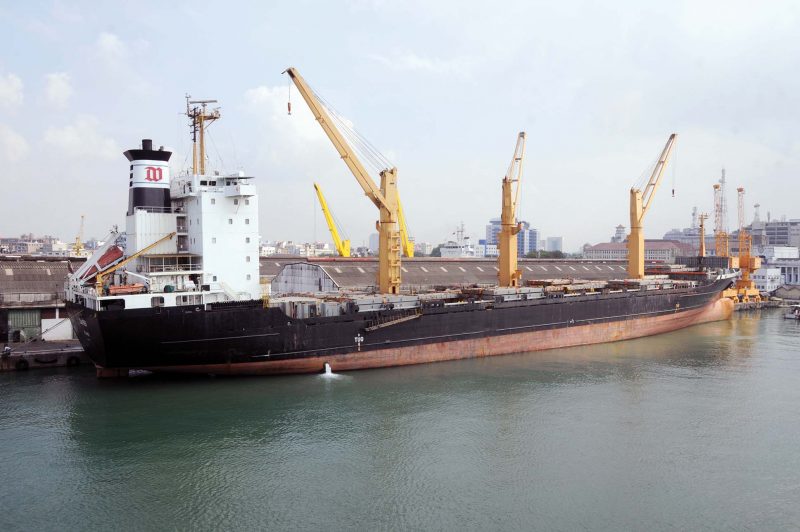
The big dry docks in Colombo harbour were in great demand during two world wars, with a big British naval fleet stationed in Trincomalee harbour on the eastern side of the island. After independence in February 1948, the port was expanded with the construction of the Queen Elizabeth Quay to give a total of sixteen alongside berths with transit sheds, cranes and warehouses. A major transformation of the port began in the early 1980s to handle large amounts of containerised cargo with the first of four container terminals opened together with much deepening of the harbour access channel in the 1990s. Colombo city today has a big population of 695,000, while the metropolitan Colombo area has a population ten times greater at over six million people. The mineral exports from Colombo are iron ore, graphite and valuable gems such as rubies, topaz, spinel and moonstones. Manufactured exports include cement, textiles, forestry products including sawn wood and wood products. Major imports are rice, wheat, electronics, electrical products and agricultural machinery.
The cement industry, chemical industries, steel rolling mill and pulp and paper mills are all State owned, with the nationalised Ceylon Petroleum Corporation owning the island oil refinery and a fleet of coastal tankers e.g. Maduru Oya and Kalu Oya of 1,000 dwt. The Sri Lankan Government has received aid from international banks and funds associated with the Commonwealth Development Fund to try to achieve an annual growth of 6%, but this figure has rarely been met due to a shortage of foreign exchange and poor cash flow.
SLPA Colombo Port Facts And Figures
| Western Port Entrance | 230.0 x 16.0 m |
| Northern Entrance | 190.0 x 13.0 m |
| South/West Breakwater | 1570.0 m |
| North/West Breakwater | 810.0 m |
| North/East Breakwater | 330.0 m |
| Port Water Area | 199.4 hectares |
| Port Land Area | 130.0 hectares |
| Fresh Water Supply | Available |
| Fumigation Services | Available |
| Bunkering | Available |
| Oil Spill Pollution Control | Available |
| Port Health Services | Available |
| Ship Stores Supply | Available |
| Container stuffing/destuffing | Available |
| Training Institute | Available |
| Marine Surveyors | Available |
| Fire Fighting Services | Available |
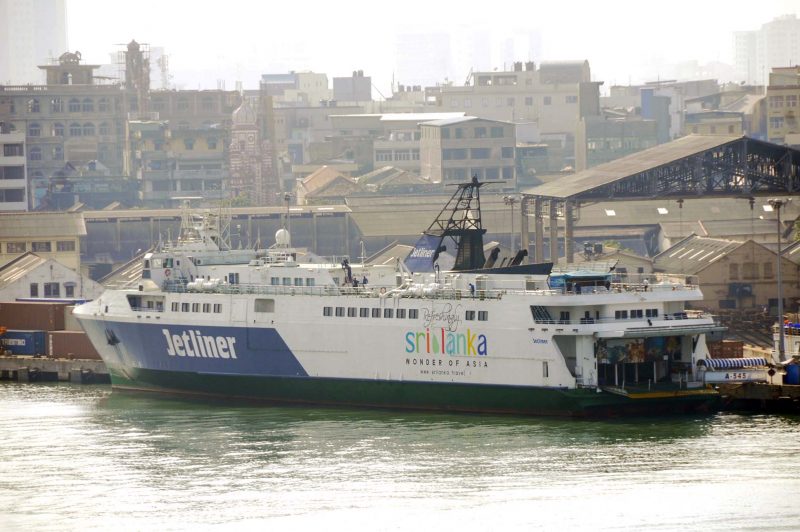
Colombo Container Terminals
The Port of Colombo headquarters building of the SLPA is located in the middle of the new South Harbour development and adjacent to the new Colombo International Container Terminal (CICT). The CICT received its first ‘mega’ container ship MSC New York of 16,650 TEU capacity on 19th November 2014. The 400 metre long vessel berthed at the longer Berth 3 and was on her maiden voyage from the builders yard after calling at Port Kelang in Malaysia en route to Europe. A plaque was presented to Capt. Domenico Pica by the Managing Director of the SLPA, Capt. Nihel Keppetipola, who welcomed the arrival of the first of many mega container ships. The SLPA had embarked on port development projects worth several billion dollars with the objective of making the Port of Colombo the maritime hub of South East Asia. The completion of the Colombo Port City Project has allowed the port to regularly welcome mega container ships. The CEO of CICT, Nelson Liu, also exchanged plaques with the Managing Director of the local MSC Lanka (Pvt) Ltd., Kamal Wijesinghe, as a mark of the respect and gratitude the port and the terminal have with Mediterranean Shipping Company (MSC), their biggest client with 265 calls per year.
Colombo International Container Terminal (CICT)
CICT is a joint venture between China Merchants Holdings (International) Co. Ltd. of Hong Kong (CMHI) and the SLPA. A 2.4 MTEU capacity container terminal was ceremonially opened on 5th August 2013, constructed outside the main harbour of Colombo in the new South Harbour Basin. A 35 year agreement was signed in 2011 with 85% of the partnership held by CMHI and the balance of 15% by the SLPA. The new South Harbour water basin has two way two lane access with a dozen twin lift gantry container cranes with an outreach of 70 metres. The turning circle is 800 metres in diameter, and the width of the harbour mouth is 570 metres. The main breakwater is of length 5.14 kilometres and the secondary breakwater is of length 1.65 kilometres and both were completed by July 2013. The dredging of the 570 metre wide nine kilometre long access channel was completed to a depth of twenty metres, and a crude oil submarine pipeline was laid across this access channel at a shallow depth. CICT cost $550M with construction having started in December 2011 and this was completed 28 months later by Chinese contractors. There are three berths at the terminal, with Berth 1 completed in July 2013, Berth 2 completed in September 2013, and Berth 3 in April 2014. The South Harbour handled 680,000 TEU of containers during 2014, enhancing the total TEU capacity of the Port of Colombo by 14% and making it among the fastest growing container ports in the world.
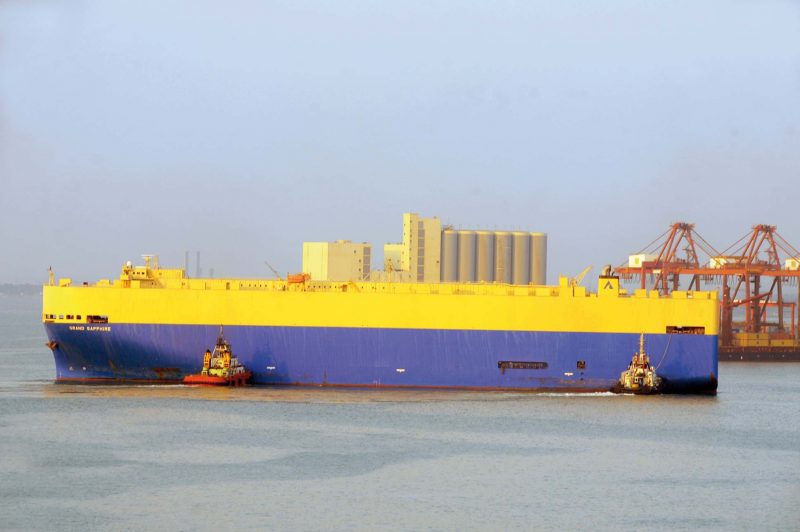

| Quay length | 1200m m |
| Alongside depth | 18.0-20.0 m |
| Reefer TEU capacity | 1150 |
| Twin Lift Gantry Cranes | 12 |
| Straddle carriers | 40 |
| Tractors | 72 |
| Container storage area | 58 hectares |
| Container storage TEU | 44,900 |
| Ship Berths | 3 |
South Asia Gateway Terminal (SAGT)
This container terminal was opened in 1999 with a quay length of 940 metres to handle ‘Super Post Panamax’ container ships. The six gantry cranes have an outreach of 51 metres over the cellular holds of the container ships, and tower some 35.5 metres in height above the quay. It is located at the south west of the main port opposite to the Bandaranaike Quay.
| Quay length | 940 m |
| Alongside depth | 14.0 m |
| Reefer TEU capacity | 1,620 |
| Gantry cranes | 6 |
| Rubber tyred cranes | 28 |
| Straddle carriers | 60 |
| Reach stackers | 5 |
| Forklifts | 10 |
| Terminal area | 20 hectares |
| Container stacking area | 12 hectares |

Jaya Container Terminal
This container terminal is located on the west side and north entrance of the main harbour of the Port of Colombo, and to the south of the Colombo Dockyard. It has four berths for deep sea container ships, named JCT1, JCT2, JCT3 and JCT4, with a total quay length of 1,292 metres, together with three feeder container ship berths of quay length 525 metres. It is a very busy terminal on the Colombo waterfront and was constructed in the late 1980s and early 1990s. JCT uses the NAVIS computer system for efficient management of cargo and containers for all port users. It has a Container Freight Station (CFS) for multi role transfers of containers.
| Quay length | 1,292 + 525 m |
| Alongside depth | 12.3-15.25 m |
| Gantry cranes | 20 |
| Rubber tyred cranes | 59 |
| Rail mounted cranes | 4 |
| Straddle carriers | 210 |
| Tractors | 60 |
| Top Lifters | 24 |
| Terminal area | 130 hectares |
| Stacking capacity | 54,000 TEU |
| Reefer capacity | 1,550 |
Unity Terminal
This container terminal was opened in 2003 and has two container ship berths of total length of 590 metres. There is also one multi-purpose berth for con/bulkers and break bulk vessels. There is an inter-terminal road linking with the Jaya Container Terminal, the SAGT Container Terminal and the CICT Container Terminal. Some container ships berth at more than one container terminal e.g. for the multi port Australia Express Service.
| Quay length | 590m |
| Alongside depth | 9.0-11.0m |
| Gantry Cranes | 3 |
| Rubber tyred cranes | 8 |
| Straddle carriers | 8 |
| Terminal tractors | 45 |
| Terminal area | 1.6 hectares |
| Stacking capacity | 8,000 TEU |

Major Container Lines Using Port Of Colombo (Calls/Year)
| MSC | 265 |
| Maersk Line | 190 |
| Libra Line | 189 |
| Evergreen Line | 160 |
| Hapag-Lloyd | 153 |
| MOL of Japan | 153 |
| APL | 150 |
| Zim Line | 144 |
| OOCL | 140 |
| NYK of Japan | 130 |
| ‘K’ Line of Japan | 122 |
| PIL of Singapore | 122 |
| Yang Ming | 100 |
| Hanjin | 90 |
| COSCO of China | 88 |
| UASC of Saudi Arabia | 50 |
| Wan Hai Line | 50 |
Feeder Container Ports
| Chennai | 4 calls/week |
| Haldia & Kolkata | 4 calls/week |
| Chittagong | 3 calls/week |
| Male (Maldives) | 3 calls/week |
| Tuticorin | 3 calls/week |
| Cochin | 2 calls/week |
| Mangalore | 2 calls/week |
| Mumbai | 2 calls/week |
| Karachi | 1 call/week |
| Mundra | Every 10 days |
| Vizagapatnam | Every 14 days |
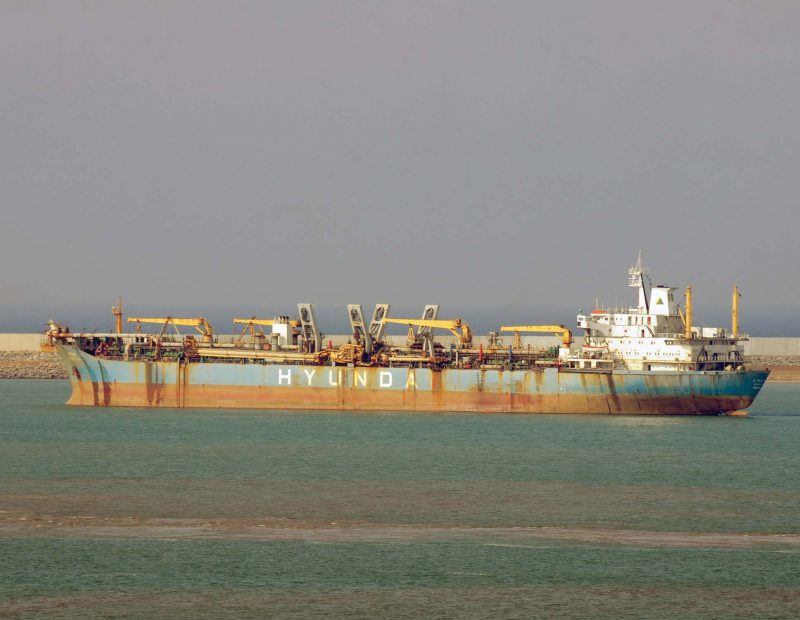
Bulk And Other Facilities
The Port of Colombo has a Bulk and Breakbulk Berth for vessels up to 50,000 dwt, as well as a new Oil Berth opened in 1997 for the replenishment of coastal and bunkering tankers. Bonded warehouses cover 6,250 square metres and accept all types of cargo except dangerous or perishable goods. Re-export covered facilities are provided and are guarded by 24 hour security services. The Colombo Pilot Station Lighthouse is at the end of the main breakwater, with pilots taken miles out to sea at the end of the access channel to board vessels often in rough seas.
The Colombo Dockyard was established in 1974 on the site of the old graving dry docks for the repair of large merchant ships calling at the Port of Colombo from Europe, Middle East, Far East, Africa and Australasia. A joint venture collaboration with the Japanese shipbuilding company of Onomichi Dockyard Co. Ltd. from 1993 saw the yard enter the shipbuilding market using their number two dry dock. The Onomichi yard has a long history in the shipbuilding and shiprepair business, and has introduced an efficient training and development programme for Colombo Dockyard employees to increase the expertise of the yard. Vessels built in recent years have included the survey ship Arabian Sea, oil rig supply vessels Greatship Rachna, Greatship Rekha and Greatship Ramya, the streamlined sister passenger vessels Lagoons and Corals of length 99 metres with accommodation for 400 passengers on the route between mainland India and the Lakshadweep Islands. Ten powerful harbour and coastal tugs of up to 555 gt, 6260 bhp and 80 tonnes bollard pull have been built for the SLPA with the names Airawana, Barana II, Chandrika, Dheera, Gotaimbara, Kanchadewa, Nandimithra, Raja, Suranimala, and Vijayabahu. There are seven repair quays of length 1,200 metres, and the dimensions of their four dry docks for repair of vessels up to 125,000 dwt are as follows :-
Dry Dock
| Length | Width | Depth | Cranage | |
| 1 | 213.0m | 26.0m | 9.7m | 50 tonnes |
| 2 | 107.0m | 18.5m | 6.7m | 50 tonnes |
| 3 | 122.0m | 16.0m | 5.5m | 10 tonnes |
| 4 | 263.0m | 44.0m | 9.0m | 50 tonnes |
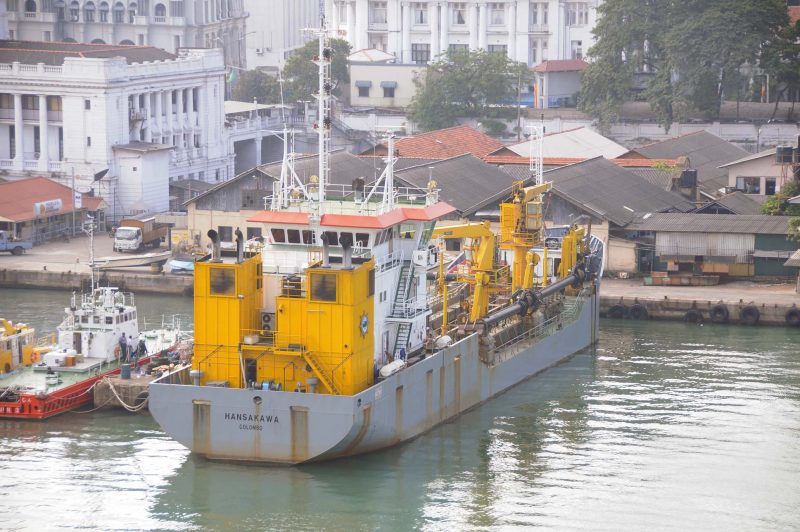
Ceylon Shipping Corporation (CSC)
CSC was formed on 6th June 1971 as a State owned deep sea shipping company by the Sri Lanka Government established under the Ceylon Shipping Corporation Act of 1971. The Government of Sri Lanka has owned all of its shares during its forty year history as a national carrier growing from strength to strength in the trades from Sri Lanka to Europe, the Far East, India and to Australasia. The Ceylon Shipping Corporation Ltd. (CSCL) was formed on 6th June 1992 as the parent company of CSC, with also the associated companies of Ceylon Port Services Ltd., Ceylon Shipping Agencies Ltd., and the Mercantile Shipping Co. Ltd., all of Colombo, under the same holding company.
The first deep sea cargo vessel was purchased on 15th January 1971 as the five hold bridge ‘midships Finnamore Meadow of 15,475 dwt, launched on 27th August 1960 and completed in January 1961 by the famous De Schelde yard at Flushing for London Greek owners Mavroleon Brothers. She was renamed Lanka Rani and she inaugurated the first CSC liner service between Colombo and the U.K. and Continent, serving for fifteen years until sold on 22nd May 1986 for breaking up at Malpe in India. A further seven general cargo ships were purchased over the next four years and renamed as Lanka Devi of 14,326 dwt, Lanka Shanthi of 14,580 dwt, Lanka Keerti of 12,068 dwt, Lanka Ratna of 15,305 dwt, Lanka Kalyani of 6,275 dwt, Lanka Kanthi of 6,790 dwt, and the coastal vessel Lanka Sagarika of 2,561 dwt for trading to Indian ports. The motor tanker Tammanna of 30,670 dwt was purchased in May 1975 and had been completed in 1958 as the bridge ‘midships engines aft Monceau for Societe des Transportes Maritimes Petroliers of France. She was used by CSC to carry crude oil to the refinery of the nationalised Ceylon Petroleum Corporation.
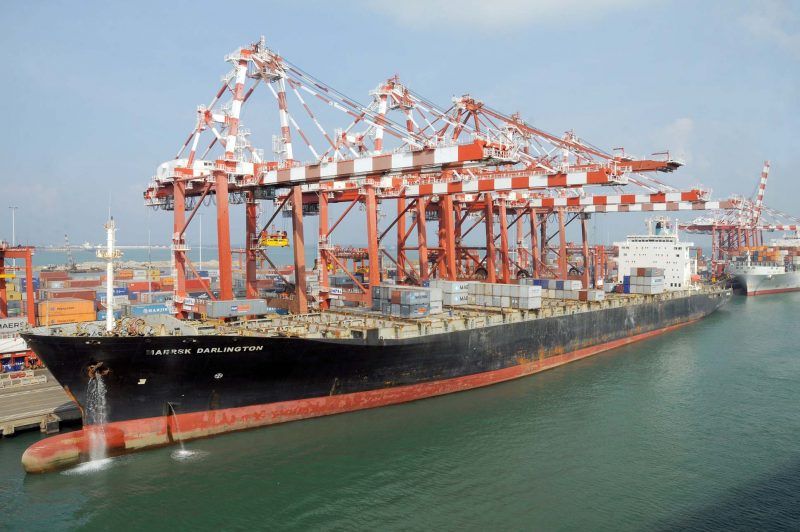
A fleet renewal programme of eight more new ships with container carrying capacity was completed in 1984 with Lanka Srimani of 9,700 dwt, Lanka Srimathi of 9,700 dwt, Lanka Athula of 10,600 dwt, Lanka Ajitha of 10,600 dwt, Lanka Mahapola of 10,325 dwt, Lanka Siri of 3,900 dwt, Lanka Seedevi of 3,900 dwt and Lanka Muditha of 3,080 dwt, the latter ship being employed on Indian services. Many general cargo ships with good container carrying capacity were also chartered from European shipowners such as Ahrenkiel and Oltmann of Germany, as well as bulkers from the Aboitiz Shipping Corporation of Cebu (Philippines). A nine hold Capesize bulker of 149,750 dwt with an unusual bridge front was purchased in 1989 from Japanese owners as Wakatsukawa Maru and renamed Lanka Manel, and had been built at Sakaide by the Kawasaki Heavy Industries yard. She was strengthened for the carriage of heavy cargoes and was much used on the coal trade from Hay Point in Queensland to Japanese and European ports or the iron ore trade from Tubarao to Dunkirk or Rotterdam on charter to Kawasaki. The fleet in 1995 comprised the four ‘A’ class of Lanka Abhaya, Lanka Amila, Lanka Aruna and Lanka Asitha of 15,000 dwt on charter, as well as Lanka Manel, Lanka Muditha, Lanka Mahapola and Lanka Ruwan.
Lanka Manel was traded until June 2002, when sold and renamed Cape Maxim and was still in service at the end of 2005. The CSC fleet also comprised the general cargo ships Lanka Mahapola of 10,325 dwt, Lanka Ruwan of 15,166 dwt, Lanka Muditha of 3,080 dwt, as well as the chartered Nordbeach of 14,190 dwt. A fully containerised container service was then operated by chartered vessels, and the ten breakbulk vessels of up to 14,500 dwt operated by the associated Mercantile Shipping Company Ltd., but owned fleet strength was then run down. However, in July 2008 CSC received a boost by forming a joint venture called CSC Kandia with the privately owned Ariston Oil and Shipping Company for crude oil imports using a 165,000 dwt Suezmax tanker as well as bunkering operations at Colombo. The joint venture agreement was signed in Tangalle in Sri Lanka and operated for a few years. The coastal vessel Lanka Muditha was laid up at Galle in 2012, and the long serving Lanka Mahapola was broken up after thirty years of trading. The CSC is virtually defunct today, with only the coastal passenger vessel Lanka Devi of 444 grt listed as owned, and she had been built at Omastrand in Norway in 2000.
Hambantota New Port
Stage I of this massive new port on the south coast of the island began in 2007 at a cost of $500 million with a 90% loan from the Bank of China. The oil fuel storage complex began operations two years later with fourteen oil tanks of 80,000 cubic metres capacity, of which eight were for the bunkering of ships, three for Avgas for aeroplanes, and three for liquidised petroleum. Automobile transhipment began in 2012 for vehicles manufactured in Japan, Korea and India, for eventual use in East Africa, Persian Gulf and Europe. The biggest ever supply of 2,600 metric tonnes of fuel oil was transferred from the tanker terminal of the port of Hambantota to the Capesize bulker Madeira on 18th October 2014.
Stage II of the new port began in 2012 at a cost of $808 million to expand the port to handle chemical imports, as well as the building of a comprehensive new shiprepair yard. The total size of this basin will be 84 hectares after fourteen million cubic metres of seawater filled it up over a period of fifty days. The water filling ceremony began on 11th July 2015 with many guests present from the SLPA and around the world to celebrate the beginning of a new enlarged port of Hambantota. The size of the new basin is 84 hectares, and after filling it with seawater, a cofferdam of length 110 metres was removed, and construction of quays, roads, electricity power station and other infrastructure began with a completion date of around 2018.

Postscript
The SLPA is a forward looking port authority with further development plans for the Port of Colombo in the pipeline. Chinese banks and companies have played an important part in the development of the SLPA and Sri Lanka. Chinese telecom links from Myanmar down the east coast of India to Sri Lanka such as the new submarine cables SEA – ME – WE5 and AAE1 have played a big part in fast internet connections from and to Sri Lanka. The southern port of Galle is also being developed with a Maritime Training Centre for seafarers in use, and also another Maritime Training Centre for seafarers at Oluvil in use. Container throughput figures for the Port of Colombo will be significantly higher for 2016, as the new CICT container terminal works up to full throughput and transhipment capacity. I wish to thank the Sri Lanka Ports Authority (SLPA) and their excellent website at www.slpa.lk for some of the information contained in this article.
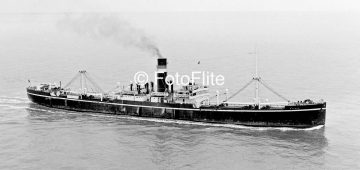



Comments
Sorry, comments are closed for this item